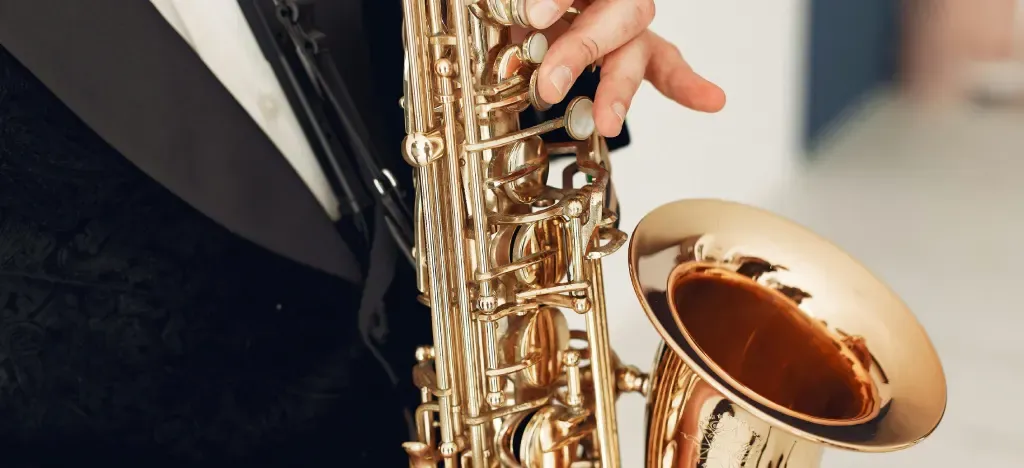Breath control is a game-changer for singers, improving everything from vocal stability to emotional expression. Proper breathing techniques can help you sustain notes, maintain vocal health, and deliver powerful performances. We'll go over essential breathing techniques and practical exercises to improve your breath control, whether you're new to singing or an experienced performer.
- Understanding the basics of breath control
- Essential breathing techniques for singers
- Free tutorial: Breathing exercises for vocalists
- 5 common breath control issues in singing
- Practical breath control exercises
- Advanced breathing techniques
- Using breath control in your practice
- Learn more vocal exercises
Understanding the basics of breath control
What is breath control in singing?
Simply put, breath control is about managing your airflow while singing. It helps you hold notes longer, sing more powerfully, and avoid running out of breath mid-song.
Why is breath control essential?
Sustained notes: Hold longer phrases without running out of breath.
Vocal power: Project your voice with strength and clarity.
Emotional expression: Convey the full range of emotions through your singing.
Vocal health: Prevent strain and injury by using proper breath support.
Why am I easily out of breath when singing?
If you find yourself gasping for air, it might be due to shallow breathing or not using your breath efficiently. Learning the right techniques can make a world of difference.
Essential breathing techniques for singers
 Getting your breathing right can make a huge difference in your singing. Here are 2 techniques to help you breathe better and support your voice.
Getting your breathing right can make a huge difference in your singing. Here are 2 techniques to help you breathe better and support your voice.
Abdominal (Diaphragmatic) Breathing
Abdominal breathing, also known as belly breathing or diaphragmatic breathing, involves expanding the abdomen while inhaling, allowing more air into the lungs.
Benefits: Increased lung capacity, improved vocal support, and better posture.
How to practice:
Lie on your back with knees bent.
Place one hand on your chest and the other on your abdomen.
Inhale deeply, focusing on expanding your abdomen while keeping your chest relatively still.
Breath Support Techniques
Breath support involves using the muscles around the diaphragm and abdomen to control airflow, ensuring a steady and strong voice.
Benefits: Stronger, more focused tone, better control of dynamics, and reduced vocal effort.
How to practice:
Hissing: Inhale deeply and exhale while making a sustained hissing sound.
Lip trills: Take a deep breath and then let the air out slowly, causing your lips to vibrate like a motorboat sound.
Free tutorial: Breathing exercises for vocalists
Take a look at our free tutorial where professional singer Stevvi Alexander guides you through these exercises.
If you want to learn the powerful vocal techniques that enabled Stevvi Alexander to perform on stages worldwide with legends like Britney Spears, Barbra Streisand and Justin Timberlake, sign up for her Singing for Beginners course. You can also try it out for free with our 7-day free trial.
5 common breath control issues in singing
 You've probably heard before that mastering breath control is key to great singing...
You've probably heard before that mastering breath control is key to great singing...
... but what do breath control problems actually sound and feel like?
Here are five common vocal issues related to poor breath control.
Unwanted breathiness: If your voice sounds airy or lacks a solid tone, you might be exhaling too quickly, reducing subglottal pressure (area below the vocal cords) and causing vocal cords/folds to blow open instead of closing fully.
Lack of control: Struggling with pitch accuracy or missing notes? These issues often stem from inadequate breath control. Improving your breath support can stabilize your pitch.
Weak-sounding voice: Insufficient breath control leads to a weak voice. Without enough subglottal pressure, your voice will lack strength and resonance.
Limited vocal range: Poor breath support might be limiting your vocal range or weakening your head voice. Proper breath control is essential for reaching higher frequencies with power.
Sounding shouty: Shoutiness can indicate breath control problems. Effective breath control involves holding back air to create a balanced sound, rather than forcing it out.
Practical breath control exercises
More breathing exercises for singers
Now that you have learned the basics about abdominal breathing and breath support, we can learn other exercises that can further enhance your control. These exercises, recommended by vocal coaches and professional singers, can make your vocals more powerful. Try them out!
4-4-4-4 breathing: This exercise helps build breath control and endurance. Inhale for four counts, hold for four, exhale for four, hold for four. Gradually increase the count as you improve to further enhance your control.
Holding notes: Practising sustained notes with consistent airflow improves your ability to maintain pitch and tone. This exercise is a favourite among opera singers and choir directors for building vocal strength and stability.
Staircase breathing: Inhale deeply and exhale gradually while singing a descending scale. This technique is commonly used in vocal warm-ups to prepare singers for performances and improve breath support.
Try inhaling through your nose, exhaling through your mouth!
You might have heard this advice before, but do you know why it's so effective? When you breathe in through your nose, your nasal passages act like a natural air conditioner, warming, humidifying, and filtering the air before it reaches your lungs. This makes breathing easier and cleaner. On the exhale, using your mouth allows for a more controlled and efficient release of air, thanks to the larger opening. This simple technique can make a big difference in your breath control and overall singing performance.
Advanced breathing techniques

When you've got the basics down, you can start exploring more advanced techniques:
Circular breathing: This technique, often used by wind instrument players and advanced singers, involves breathing in through the nose while simultaneously pushing air out through the mouth using air stored in the cheeks. Practice by sustaining a note while inhaling through your nose in short bursts.
Segmented breathing: Divide your inhalation and exhalation into segments. For example, inhale in three short, quick breaths and then exhale in three short, quick bursts. This exercise helps in gaining control over short, quick breaths needed during complex vocal phrases.
Controlled sibilance: Sing a phrase and then repeat it, exaggerating the 's' sounds. This technique helps in controlling the breath release and practising breath support during sibilant sounds.
Vowel shaping with breath: Practice sustaining different vowels (a, e, i, o, u) while maintaining consistent breath support. Change the shape of your mouth and the vowel sound without losing breath control.
Using breath control in your practice
Consistency is really important when learning any skill, so make these exercises a regular part of your practice routine. For example:
Daily practice routine:
Start with abdominal / diaphragmatic breathing exercises.
Practice breath support exercises.
Incorporate breath control exercises into your vocal practice.
Learn more vocal exercises
By understanding the basics, practising essential techniques, and integrating advanced exercises, you can really make progress.
For even faster progress, try out our singing courses!
Try Our FREE 7-Day Trial!


